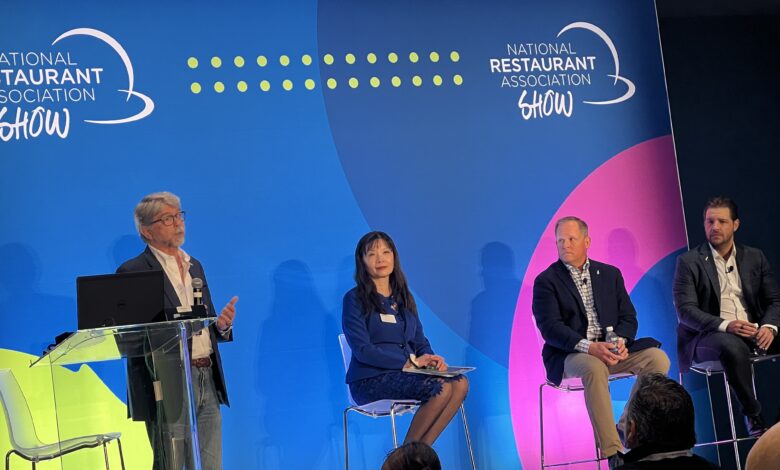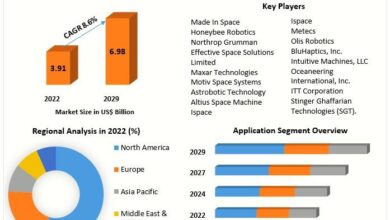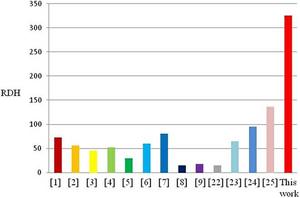4 challenges to address as AI takes over the restaurant industry

Although it seems like AI and robotics have penetrated many aspects of restaurant operations, the truth is that the hospitality industry is still in the early stages of implementation. In fact, according to recent data from the Nation’s Restaurant News Intelligence Tech Market Leader Report, 63% of operators do not currently use AI.
At the National Restaurant Association Show in Chicago, experts and operators explored the questions and challenges around AI and robotics for the average hospitality operator during the “Revolutionizing Hospitality: The Journey of AI and Robotics in Enhancing Guest Experiences” education session The most simple issue? Internet connectivity.
“I can tell you what keeps me up at night — losing the Internet,” Bob Schalow, senior vice president of Diversified Restaurant Group said during the panel discussion. “You when I’ve lost the Internet, I’ve lost the capability to run my restaurant. Back in the day we just had cash registers, but the reality is that when I’ve lost the internet, I’ve lost my restaurant. So we’re now drastically trying to get that up and going.”
Besides losing Internet connectivity, here are some of the current roadblocks and limitations that were discussed.
Employee displacement fears
With discussions around AI and automation, eventually the topic of employee replacement will come up: If you have voice AI in the drive-thru lane, do you need headset-wearing employees too? If you have kiosks, QR codes and AI answering the phones, do you need as much labor in the front- or back-of-house?
“When we first turned on AI ordering, we had guests asking if we had eliminated a position in the restaurant and employees nervous about job elimination, but we said that this will be more of a job enhancer,” Schalow said. “The reality is, everyone still has a role, but we are going to be executing more efficiently because we have to find efficiencies within our P&L. So, there’s still a role for you, but that role might look different.”
However, it’s a complex issue, and not everyone agrees. Panelist Ryan Hicks, CEO of Franchise Supplier Network, said that unfortunately the advent of AI and automation does mean that some positions will be eliminated.
“I would say the goal is actually to eliminate some jobs if you’re talking about [offsetting] labor costs,” Hicks said. “This has been the story with new technology time and time again…but there’s also new job creation along with the technology… the same type of scary technology that that can displace people in the workforce can also help you recruit other people in the workforce.”
The computer is not perfect
Ironically, even though a major purpose of AI is to take on menial or time-consuming tasks, it actually takes human labor to teach it to do so. Bob Schalow said that at his restaurants where he added voice AI in the drive-thru lane, you might be greeted by a computer, but the human being is listening in to take over if the conversation strays too far from the capabilities and scripting of the artificial intelligence. After all, AI has its limitations, especially in this stage of the technology development.
“The team member now is actually more productive because they’re listening, but doing another task, and if the computer cannot analyze or understand what the human is asking for, generally the team member does,” Schalow said.
Data readiness
In order to be able to invest in AI and robotics, one major component that many operators have not invested enough in, is understanding how to mine, collect, and analyze data from various elements of their tech stack. Tech literacy is a huge hurdle for many operators to clear before they can truly take advantage of the innovative solutions out there.
“You have to have your data in order — doing a data readiness exercise, for example,” Hicks said. “If you don’t have your data warehouse in order, then you’re not going to be able to action it, whether it’s marketing or anything else.”
Cost
Right now, a lot of the most exciting AI capabilities — from generative AI-run back-of-house operations to robot fry cooks — are at a pricepoint that’s out of reach for many operators. The panelists seemed to think that even though it seems like “pay to play” right now, the cost will eventually come down.
“The challenge, historically, has been, ‘how do we get the cost down and make that digestible?’ and I think that we’re there in a couple of years,” Hicks said, adding that he suggests that operators start small with AI and invest in automated marketing programs, for example, instead of jumping straight to robot line cooks.
Contact Joanna at [email protected]m



